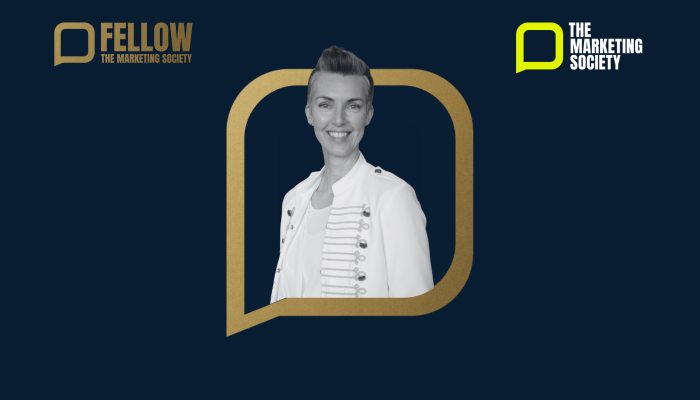There is a principle within UX design called Tesler’s Law. The posher name for it “The Conservation of Complexity”, and it states that in every application there is an inherent amount of complexity that cannot be removed, simplified or hidden.
I think it’s time we applied Tesler’s Law to the world in marketing communications, as an antidote to the modern world’s unhealthy obsession with over-simplication. I want it applied in two specific areas: communications planning and agency engagement.
We humans love simplicity and we’re encouraged – especially by a few of the noisier bloggers and tweeters – to see the world in a very binary, overly simplistic fashion. But the world is complicated. Marketing is complicated. The modern communications landscape is very complicated. I’ve written before about how dangerous I think the over-eulogising of over-simplification is. I think the issue might be getting worse rather than better – but I’m willing to admit I might just be spending too much of my time on LinkedIn!
I don’t know if there is an opposite of Tesler’s Law so I’ll invent one. I’ll call it Amoeba’s Law: unhealthy worship of simplicity at the expense of quality. I think Amoeba’s Law tends to push people into binary choices that are not only unnecessary but dangerous. For two main reasons: Firstly, over-simplification leads to silly binary arguments. Unhelpful non-Tesler choices like ‘Traditional’ vs. ‘Digital’ in terms of comms planning, for starters.
Modern marketing commentary encourages binary thinking, as does the clickbaity nature of most industry websites on the matter. The rise of THIS must mean the death of THAT. You should stick ALL of your money on Facebook and Instagram (thanks, Gary Vaynerchuk). I read a piece recently by the aforementioned Gary Vee on LinkedIn where he stated that “no one is watching TV any more”. Now everyone is entitled to their own opinion but not to their own facts. The statement is clearly, demonstrably false. Linear TV still accounts for over 60% of TV viewing in the UK (Source: Ofcom). It accounts for nearly 80% of TV viewing of those over 55 and considering that 80% of all wealth in the UK is held by over 55s and you start to see why it might be a good idea for advertisers not to fall for this kind of binary argument.
We should all resist this kind of silly binary showboating. It’s not a world of either/or, it is world of “and”. Tesler’s Law is vital for marketing communications because otherwise we run the risk of falling in love with the latest shiny marble and prioritising it over what we know works well.
Our world needs a certain degree of complexity. We need to remove ourselves from the unhelpful adversarial death match of Traditional vs. Digital comms. Binet and Field have already proved, time and time again, that it is a mixture of both that wins the day. The best communications plans have just the right level of complexity in them. They tend to be a good balance of the old and the new, the proven and the punt.
But I want to make a plea for Tesler’s Law especially in the area of agency use by clients.
According to most metrics I’ve seen the big six holding companies currently have just over 70% of all the advertising budgets globally. Why? Well I’d argue that the simplest reason is simplicity itself. It’s easier and more convenient to put something in one place. Shopping in a big Sainsburys is easier than visiting five different specialist food outlets (although pretty much everyone would agree you’d get better quality from the specialist retailers).
We’ve forgotten Tesler’s Law (or hidden it) when it comes to the world of communications. Simplicity is often sold by agencies as if it’s a panacea, and it can often be quite a pernicious disease.
Anyone who has ever worked for one of the big/bigger/biggest agencies knows that you are encouraged to grab as much of the client media pie as possible.
“Get the business in the door and we’ll figure it out later”– better known as the Fyre-Festival-Principle.
The issue then comes from a reluctance to (or a diktat that you cannot) invest in talent or skills ahead of revenue.
The complexity of modern communications requires experts to navigate it for us. The one-stop-shop doesn’t exactly encourage the employment of specialists, and most often specialists are what clients need.
I’m not saying lots of complexity is a good thing, but in some cases a degree of complexity is necessary – and the key thing for any agency or client is to manage complexity not mirror it.
Running multi-channel campaigns is complicated and needs specialist skill. Basically, what clients need is the right mix of brilliant thinkers, specialist practitioners and ruthlessly efficient producers/ringmasters to manage it. It’s not just about making everything seem simple by just calling it the same thing or giving it a business card with the same name/logo on it and calling it integrated.
The key to Tesler’s Law is in not mistaking simplicity for perfection. Let’s leave the right amount of complexity that the right solution demands for the multi-layered, more multi-channel world that is modern marketing. The world needs experts, and the right model to manage them. The one-stop-shop is a dangerous modern marketing myth. Let’s not mistake convenience for correct.
As Albert Einstein said “everything should be as simple as it can be, but not simpler”.
By Kevin Chesters, Strategy Partner at Harbour Collective (incoming).



